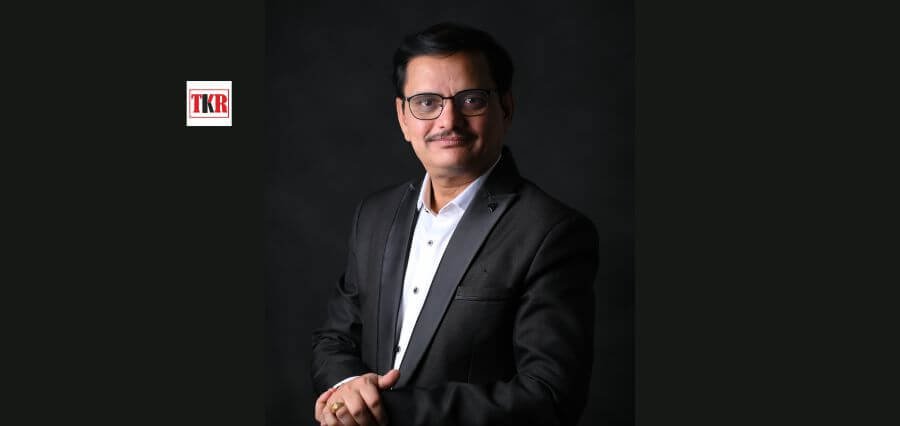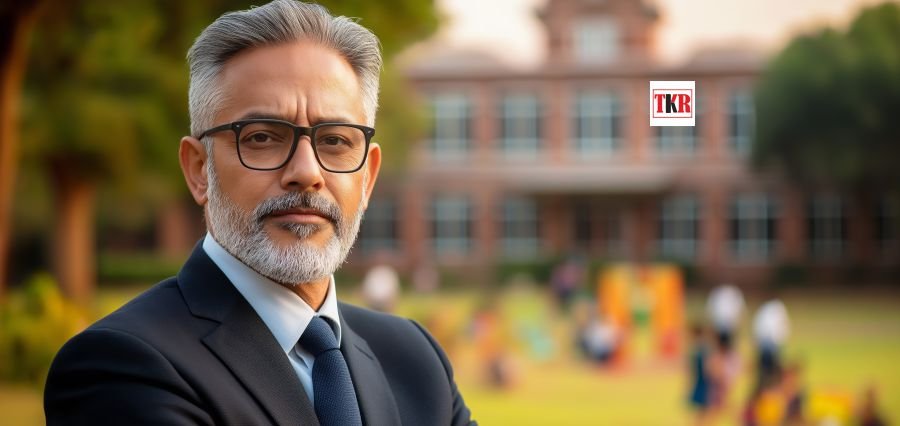The transformative journey of Mr. Prakash Sulakhe into becoming a leading figure in India’s education industry was not one born out of convenience but rather conviction. In the early phases of his professional life, he experienced first-hand the disconnect between theoretical learning and its real-world applications. His exposure to on-ground technical challenges and his background in engineering led him to identify pressing voids in how education was being delivered across institutions, especially in laboratory infrastructure and hands-on industrial training. This observation would soon evolve into a powerful mission: to build a bridge between classroom theory and industrial practice through the innovation of lab equipment and smart educational tools.
Through persistent effort and deep-rooted passion, Mr. Sulakhe developed industry-standard lab equipment—ranging from CNC Trainer Machines to Pneumatic and Hydraulic Workstations—that brought industrial realism into the academic setting. These innovations weren’t merely tools; they were enablers of a smarter learning environment. The recognition his innovations garnered from the academic community added momentum to his mission. Eventually, this marked the full-fledged entry of his organization into the education sector, driven by a vision of enabling practical, immersive learning experiences that nurture industry-ready engineers.
What makes Mr. Sulakhe’s contribution truly remarkable is not just the innovation in hardware or software but the underlying purpose: a deep commitment to empowering students, educators, and institutions with tools that reflect current and future industry needs. His work speaks to a larger movement within Indian education—one that emphasizes quality, accessibility, and technological alignment to create engineers who don’t just graduate but excel in an evolving industrial landscape.
The Spark Behind the Journey
Mr. Prakash Sulakhe’s journey in the education domain is rooted in practical exposure to the glaring inconsistencies between textbook knowledge and industry requirements. While executing several repair works for educational institutions in the initial stages of his business, he witnessed the rudimentary infrastructure that failed to prepare students for modern-day industrial demands. It was evident that while academic curricula provided foundational concepts, the students lacked familiarity with the tools and systems used in real-world scenarios.
These realizations served as a catalyst. Recognizing an opportunity to address these gaps, Mr. Sulakhe began developing laboratory training equipment that mirrored real-time industrial environments. This included CNC Machine Trainers and Hydraulic-Pneumatic Workstations equipped with genuine industry-grade components. These tools not only enriched the understanding of students but also inspired confidence in educators. The academic community’s appreciation of these solutions reaffirmed Mr. Sulakhe’s belief that education, when combined with innovation, can produce transformative results.
Fuelled by this belief, his organization went on to focus entirely on educational transformation. With consistent commitment to innovation, quality, training support, and customer service, the brand steadily established itself as a trusted name in technical education, setting benchmarks for others in the space.
Foundations of Effective Leadership
For Mr. Sulakhe, leadership is akin to piloting an aircraft—it is essential, directional, and transformative. In his words, innovation without leadership is rudderless. His leadership philosophy is rooted in the principles of inclusivity, stakeholder engagement, and solution-oriented action. He believes that change, particularly in the education sector, requires not just visionary thinking but acceptance from intellectual academic bodies and alignment with regulatory frameworks.
This is why his organization constantly engaged with educators while developing pioneering solutions such as IoT-based Mechatronics Training Setups and Computer Integrated Manufacturing (CIM) systems. These products did not merely follow trends but anticipated them, giving educational institutions tools that were future-ready. His team worked alongside professors, lab technicians, and curriculum developers to ensure that each innovation was not only technically advanced but also pedagogically relevant.
By building feedback loops, focusing on user-friendly interfaces, and integrating simulation-based learning methods, Mr. Sulakhe ensured that students could understand complex engineering concepts through experiential learning. His leadership continues to reflect the belief that a leader must walk alongside every stakeholder and address pain points with executable solutions.
Staying Ahead Through Problem-Solving
Mr. Sulakhe’s strategy to remain relevant in a fast-evolving landscape is grounded in active engagement with the ecosystem. He and his team make it a point to identify and respond to the challenges faced by educators, faculty members, and engineering students during tight academic schedules. Instead of working around academic calendars, his organization aligns itself with the rhythm of educational institutions, offering timely interventions that add value to the teaching-learning process.
From developing maintenance-friendly equipment to offering scalable software-based simulations, every product is designed to solve a specific need—be it enhancing student engagement, reducing lab downtime, or boosting the technical proficiency of educators. His company’s consistent emphasis on adding value, training support, and tech-aligned content has helped it thrive in a constantly changing educational environment.
Adapting to Learner-Centric Evolution
The shift from traditional tools to smart lab infrastructure in Indian education has been monumental, and Mr. Sulakhe has been one of the key enablers of this transition. As industries began embracing automation, PLC technologies, and CNC-based systems in the late ’90s, academic institutions were slow to catch up due to cost constraints and knowledge gaps. To address this, Mr. Sulakhe’s team developed India’s first affordable CNC Trainer Machine and PLC Training Kits—tools that allowed engineering students to gain practical exposure to real industrial technologies without stepping out of campus.
He also leveraged the rise of Windows-based software to develop PC-based data acquisition systems in 2000, offering a highly interactive and immersive learning experience for students working on engine testing rigs or refrigeration systems. As technology further evolved, he spearheaded the in-house development of India’s first Six-Axis Articulated Robot in 2006 and supplied it to leading institutes like NIT Jamshedpur—underscoring his long-term vision of aligning academic training with automation trends.
Impact of Recognition and Awards
Recognition, Mr. Sulakhe believes, is not merely a feather in the cap but a reaffirmation of one’s purpose. In a vast country like India, where grassroots-level innovation often goes unnoticed, awards and accolades offer much-needed visibility and authority. The honors his organization has received have served to not only boost the team’s morale but also solidify its reputation in the academic and industrial communities.
On a personal level, Mr. Sulakhe finds motivation in the responsibility these accolades bring. Each recognition inspires him to take on bigger challenges and to continue innovating solutions that will shape the next generation of engineers. It also drives a deeper sense of accountability toward the education sector, compelling him to constantly push the envelope of what’s possible.
Collaborative Innovation for Future Readiness
In Mr. Sulakhe’s view, collaboration is not optional; it’s essential. To stay relevant in a multi-disciplinary world, particularly in education, organizations must work hand-in-hand with domain experts from different branches of engineering and technology. By fostering partnerships with forward-thinking companies like POCKET NC and WAZER in the United States, he has ensured that high-end international tools, previously unavailable in India, are now accessible for Indian research and academic institutions.
Such collaborations bring the best of global technology into Indian classrooms, enabling students and faculty to align with international standards. These partnerships also strengthen India’s education infrastructure and open up new research avenues for institutes like IITs and NITs. For Mr. Sulakhe, community building goes hand-in-hand with technology building.
Building Resilience in Uncertain Times
During the COVID-19 pandemic, when educational institutions across the country were shut down and financial uncertainty loomed large, Mr. Sulakhe’s response stood out. Instead of retreating, his organization doubled down on innovation. They began focusing on building industrial and digital products, anticipating the long-term shift in demand toward automation and remote learning tools.
Crucially, not a single employee was laid off, and instead of slashing salaries, the company gave a 10% increment across the board. This decision built deep trust within the organization and served as a powerful motivator. Mr. Sulakhe’s leadership during this turbulent period underscores his belief that investing in people and products—even during downturns—yields enduring returns.
Current Challenges in Professional Education
The current mismatch between industry requirements and academic outcomes is one of the most pressing challenges in the education sector, according to Mr. Sulakhe. Educational institutions must stop viewing professional education through the lens of calendar deadlines and instead pivot to a model that emphasizes industry-relevant skills.
For real progress, academic leaders and industry experts need to collaborate, share insights, and develop training programs that prepare students for tomorrow’s jobs. Professional education should open doors to employment, while industrial training must provide career advancement pathways. Mr. Sulakhe sees this synergy as crucial for India’s growth.
Advice for Emerging Education Leaders
Emerging leaders who wish to make a lasting impact in the education sector must be driven by passion and purpose. According to Mr. Sulakhe, true leadership in education is about contributing to nation-building by reaching out to underserved areas and introducing affordable, technology-driven solutions. These leaders must remain agile and forward-looking, keeping pace with global technology trends while addressing the real, on-ground needs of the Indian education system.
Digital transformation, he insists, will be the backbone of the next phase of education evolution. Those who can innovate, empathize, and execute simultaneously will define the next generation of educational reformers.
Vision Behind “Smart Labs for Smarter Engineers”
Mr. Sulakhe’s recently launched book, “SMART LABS FOR SMARTER ENGINEERS”, co-unveiled with Goa’s Chief Minister Mr. Pramod Sawant, MP Hema Malini, and Minister Mr. Naik, encapsulates his 29 years of experience in education innovation. The book is a practical guide for engineering colleges, lab technicians, and decision-makers to transition from conventional setups to smart labs.
Complete with sample layouts, product listings, and detailed implementation strategies, it serves as a go-to manual for educational institutions planning to upgrade their lab infrastructure. By combining educator insights, industry trends, and real-life case studies, the book maps the road to building future-ready engineering labs across India.
Looking Forward: The Vision of 2025 and Beyond
As 2025 unfolds, Mr. Sulakhe’s excitement lies in driving India toward global parity in engineering education. With a vision of “Advancing Education, to Create Future-Ready Labs with Affordable Excellence,” he aims to deepen the penetration of smart labs across tier-2 and rural institutions, making cutting-edge learning accessible to all.
To him, engineers are creators of the world, and shaping them is not just a responsibility but a mission. His organization continues to focus on integrating industry-aligned skills, digital tools, and immersive technology to redefine how future engineers are trained. The road ahead is one of inclusion, innovation, and impact, and Mr. Sulakhe is leading the way.





